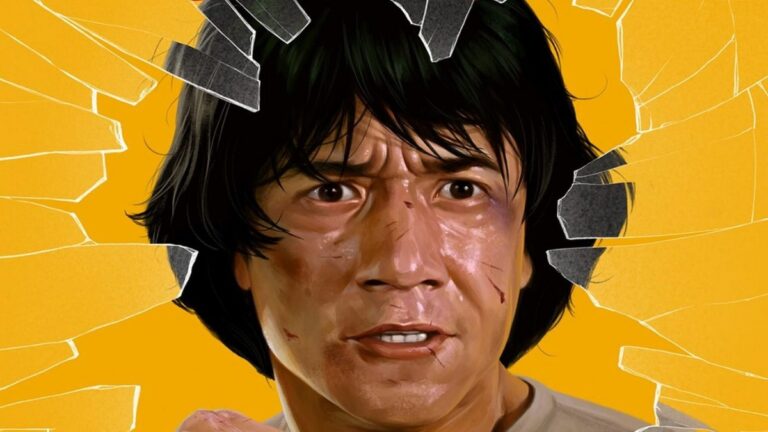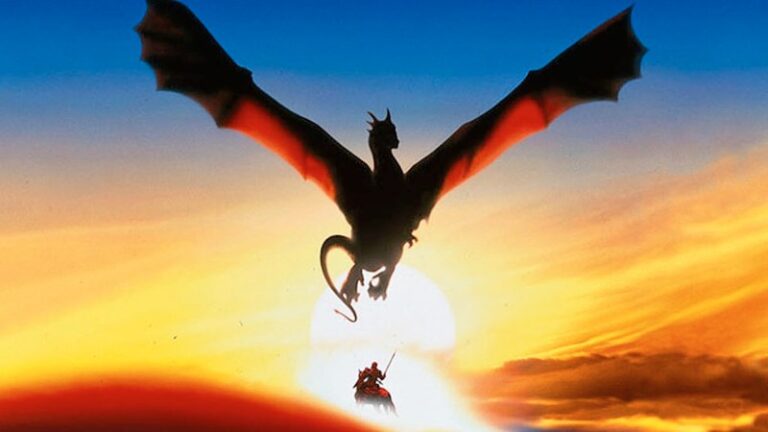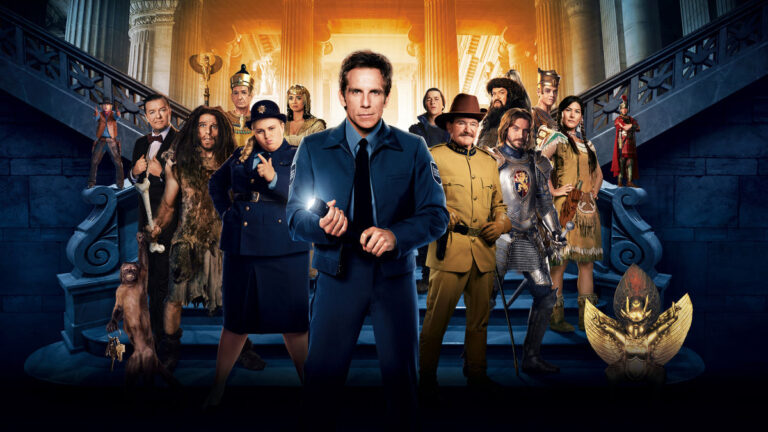Ultraman Watch Order: Including Movies & OVA’s

Navigating the vast Ultraman universe can be a daunting task for both new and returning viewers. With decades of TV series, numerous movies, and Original Video Animations (OVAs) to its name, finding the ideal watch order becomes more than just a simple undertaking.
This article aims to demystify the Ultraman chronology, providing a comprehensive guide to the watch order of all Ultraman series, including the often overlooked movies and OVAs. Whether you’re a newcomer to the Ultraman saga, a longtime fan revisiting the classics, or a completist aiming to watch it all, this roadmap will offer invaluable direction, enhancing your journey through this iconic franchise.
Chronological Ultraman Series Watch Order
The Ultraman franchise consists of multiple series with interlaced storylines and several independent spin-offs. It’s worth noting that Ultraman, while having an overarching universe, doesn’t strictly adhere to a linear continuity like some other franchises. Still, the chronological watch order can provide an enriching viewing experience, especially for fans interested in seeing the evolution of the franchise over time.
- Ultraman (1966-1967): This is the original Ultraman series, which sets the foundation for the entire franchise.
- Ultraseven (1967-1968): The direct sequel to Ultraman, Ultraseven expands on the universe and introduces a new Ultraman character.
- Return of Ultraman (1971-1972): After a brief hiatus, the franchise returned with a new Ultraman character and continued to build the universe.
- Ultraman Ace (1972-1973): Introduces another new Ultraman character, continuing the tradition of the franchise.
- Ultraman Taro (1973-1974): Continues the mainline series with another new character in the Ultraman lineup.
- Ultraman Leo (1974-1975): The final series in the Showa era of Ultraman.
[…]
This list should continue with all Ultraman series in the order they were released, concluding with the most recent series up to the date of your viewing.
Keep in mind that there are several other Ultraman series outside of the main timeline, including spin-offs and alternate universe series. It’s also important to remember that not every series directly continues the story from the previous one, and some even reimagine the entire Ultraman concept. A comprehensive viewing guide should ideally cover these nuances to ensure that viewers can fully appreciate the depth and breadth of the Ultraman franchise.
Ultraman Movies: Integration into the Series Timeline
Just like the series, Ultraman movies also play a significant role in the franchise, often providing supplemental storylines, introducing new characters, or even presenting alternate timelines. However, integrating them into the series timeline can sometimes be a challenge, given their unique standalone narratives and the occasionally ambiguous timeline.
Below is a suggested placement of the major Ultraman movies within the series timeline. Please note that some movies might contain spoilers for their corresponding series, and others might be best watched after finishing a particular series.
- Ultraman Zoffy: Ultra Warriors vs. the Giant Monster Army (1984): This movie can be watched after the Ultraman 80 series as it features Ultraman Zoffy and other Showa-era Ultraman characters.
- Ultraman: The Adventure Begins (1987): A unique entry produced in the USA, it stands alone and can be watched anytime.
- Ultraman: The Ultimate Hero (1993): This is another American production and can be viewed as standalone.
- Ultraman Tiga & Ultraman Dyna & Ultraman Gaia: Battle in Hyperspace (1999): Ideally watched after finishing Ultraman Gaia, as it’s a crossover movie featuring Ultraman Tiga, Dyna, and Gaia.
[…]
This list should continue, fitting the movies into the chronological series timeline where it makes the most narrative sense.
Additionally, some films are entirely standalone and can be watched independently, while others serve as direct sequels or prequels to particular series, making their place in the timeline more concrete. As with the series, the films’ viewing order can vary based on personal preference, though this suggested order provides a more story-based, chronological experience.
Understanding Ultraman OVAs
Original Video Animations (OVAs) or direct-to-video releases are a unique facet of the Ultraman franchise. These releases often offer additional narrative elements, character backstories, or alternative scenarios that may not fit within the conventional format of a series or a movie. As such, they can add depth and richness to the Ultraman universe, making them a must-watch for avid fans. Here’s what you need to know about Ultraman OVAs and how they fit into your watch list.
- Purpose of Ultraman OVAs: OVAs often serve a specific purpose, either to provide additional context, fill in gaps in the storyline, or offer a unique perspective on the Ultraman universe. They can be particularly useful for delving deeper into the characters and storylines of the franchise.
- Stand-Alone Vs Series-Related OVAs: Some OVAs are stand-alone stories that do not directly relate to any specific Ultraman series. These can generally be watched at any time. Other OVAs are directly linked to a particular series and are best watched immediately following that series to provide additional context or narrative expansion.
- Notable Ultraman OVAs: There have been several OVAs throughout the Ultraman franchise’s history. Some notable examples include “Ultraman Tiga Side Story: Revival of the Ancient Giant” (2001) which can be watched after the “Ultraman Tiga” series, and “Ultraman Mebius Side Story: Ghost Rebirth” (2009), ideally viewed after completing the “Ultraman Mebius” series.
While OVAs may not always be essential to the main storyline, they can provide an enriched viewing experience and are highly recommended for those wanting to explore the Ultraman universe in more depth.
Recommended Watch Order for First-Time Viewers
For first-time viewers venturing into the expansive universe of Ultraman, the sheer volume of series, movies, and OVAs can be overwhelming. Thus, it can be helpful to have a streamlined viewing order that introduces the franchise’s core concepts and iconic characters, providing a solid grounding before delving into the more complex elements of the continuity. Here’s a recommended watch order for newcomers:
- Ultraman (1966-1967): Begin with the original Ultraman series. It introduces the basic premise and lays the groundwork for the subsequent series.
- Ultraseven (1967-1968): This sequel builds on the original series and is considered a classic within the franchise.
- Ultraman Tiga (1996-1997): A reboot of sorts, Ultraman Tiga brings in a new continuity and serves as a great starting point for the Heisei era of Ultraman.
- Ultraman Gaia (1998-1999): A well-received series with a more complex plot, Gaia showcases the evolution of the franchise and the greater depth of modern Ultraman storytelling.
- Ultraman Mebius (2006-2007): Celebrating the franchise’s 40th anniversary, Mebius ties together elements from previous series and serves as a great introduction to the interconnectedness of the Ultraman universe.
- Ultraman X (2015-2016): This series integrates both traditional and modern Ultraman themes and is a good introduction to the newer era of the franchise.
- Ultraman Z (2020-2021): The latest series at the time of my training cutoff, Ultraman Z showcases how the franchise continues to evolve while still paying homage to its roots.
This order allows newcomers to experience the breadth and depth of the Ultraman universe without getting overwhelmed. After these series, viewers can choose to explore additional series, movies, OVAs, and spin-offs based on their preferences and interests.
Comprehensive Ultraman Watch Order for Superfans
For superfans of the franchise who aim to consume all of the Ultraman content in the most coherent way possible, a comprehensive watch order is crucial. This would involve a chronological viewing of series, intertwined with relevant movies and OVAs, ensuring no stone in the Ultraman universe is left unturned. Here’s the suggested comprehensive watch order, which spans across all eras of Ultraman from Showa, Heisei to Reiwa:
- Ultraman (1966-1967): Start with the original series which established the Ultraman concept and set the stage for future developments.
- Ultraseven (1967-1968): The direct sequel to the original series.
- Return of Ultraman (1971-1972)
- Ultraman Ace (1972-1973)
- Ultraman Taro (1973-1974)
[…]
Continue watching the rest of the series in chronological order of release
After the completion of each series, it’s recommended to watch related movies and OVAs to enrich the overall understanding and appreciation of the series. For example, after completing “Ultraman Mebius”, you may wish to watch “Ultraman Mebius & the Ultra Brothers” and the two-part OVA “Ultraman Mebius Side Story: Ghost Rebirth”.
Lastly, remember to also check out the standalone movies and OVAs which can be fitted between series, as well as spin-offs and alternate universe series, such as the animated “The☆Ultraman” or the darker-themed “Ultraman: Towards the Future”. This comprehensive order will provide superfans with a deep, expansive experience of the entire Ultraman universe.
Ultraman Series Stand-Alones and Spin-Offs: Where to Fit Them In
Ultraman’s universe is vast, and beyond the primary series, there are several stand-alone and spin-off series that either offer a different perspective, present a unique storyline, or explore alternate universes. While they might not fit directly into the main continuity, these entries still contribute significantly to the broader Ultraman lore and can add an extra layer of enjoyment for fans. Here’s where to fit them into your watch order:
- Ultraman: Towards the Future (1990-1991): This Australia-based production has a unique storyline and can be watched independently anytime.
- Ultraman: The Ultimate Hero (1993-1994): Another Western production, this series offers a new take on the Ultraman concept and can be viewed at any time.
- Ultraman Neos (2000-2001): As a series initially released directly to video, it stands on its own and can be watched anytime.
- Ultraman: The Adventure Begins (1987): This animated movie from the USA has a stand-alone story that is disconnected from the main continuity and can be watched at any time.
- Ultraman Nexus (2004-2005): A darker and more adult-oriented series, Nexus can be watched after the early Heisei Ultraman series, but it stands largely on its own.
- Ultra Fight Victory (2015): This spin-off is directly connected to Ultraman Ginga S and should be watched right after it.
- Ultraman Orb: The Origin Saga (2016-2017): This is a prequel to Ultraman Orb and could be watched before the main series.
While not essential to the main Ultraman storyline, these series and spin-offs provide additional context, variety, and breadth to the franchise, making them worthwhile for any Ultraman superfan.
Essential Ultraman Crossover Episodes and Events
Ultraman’s vast universe and extensive history have paved the way for many memorable crossover episodes and events, where heroes from different series come together to face a common threat. These instances not only provide fan-favorite moments but also offer a broader understanding of the Ultraman multiverse. Here are some of the most essential crossover episodes and events:
- “Ultraman Mebius & Ultraman Brothers” (2006): This film unites Ultraman Mebius with the original Ultraman, Ultraseven, Ultraman Jack, and Ultraman Ace. Watch this after finishing the Ultraman Mebius series.
- “Mega Monster Battle: Ultra Galaxy Legends The Movie” (2009): This movie showcases a grand gathering of Ultraman characters and can be watched after the “Ultraman Mebius” series.
- “Ultraman Zero: The Revenge of Belial” (2010): A sequel to “Mega Monster Battle: Ultra Galaxy Legends The Movie,” it continues the story and should be watched immediately after.
- “Ultraman Ginga S The Movie: Showdown! The 10 Ultra Warriors!” (2015): A significant crossover film in the franchise, this should be watched after “Ultraman Ginga S” and “Ultra Fight Victory”.
- “Ultraman Orb: The Movie – Let Me Borrow the Power of Bonds!” (2017): This film features Ultraman Orb teaming up with Ultraman Ginga, Victory, X, and more. Watch after “Ultraman Orb”.
These crossovers may not be crucial to the narrative of individual series, still they help to construct a broader picture of the Ultraman universe, drawing connections between characters and series, and are thus an exciting part of the Ultraman experience.
How to Navigate the Ultraman Multiverse
The Ultraman Multiverse, known as the “Ultra Series Multiverse,” is a complex web of parallel dimensions, alternate realities, and various timelines that together comprise the broader Ultraman universe. To effectively navigate through this Multiverse, one must understand its basic structure and how the different series, films, and OVAs fit within this structure. Here’s a guide to help you get started:
- Understand the Multiverse Concept: Recognize that not all Ultraman series exist within the same universe. Some series are set in alternate realities or parallel dimensions, and understanding this concept is key to navigate the Ultraman Multiverse.
- Identify the Main Universes: The Ultraman Multiverse is primarily divided into the Showa, Heisei, and Reiwa universes, with each era marked by distinct characteristics and themes. Knowing which series belong to which universe can help you follow the narrative threads more efficiently.
- Recognize Standalone and Alternate Universe Series: Some series, like “Ultraman: Towards the Future” and “Ultraman Nexus,” exist in their own separate universes. While they may not directly impact the main continuity, they add depth and diversity to the overall Multiverse.
- Crossover Events and Their Role: Crossover films and episodes often bring together Ultraman characters from various universes. These events, while exciting, can sometimes blur the lines between different universes. It’s important to remember that these are special instances and may not always reflect the standard continuity.
- Embrace the Complexity: The Ultraman Multiverse is intricate, and part of the fun is exploring its complexities. Don’t be discouraged if you don’t understand everything at first – the enjoyment comes with gradual understanding and immersion in the different series and films.
Navigating the Ultraman Multiverse can be a challenging but rewarding experience. By understanding the basic structure and recognizing the various universes, you can more thoroughly enjoy the depth and variety that this iconic franchise has to offer.







